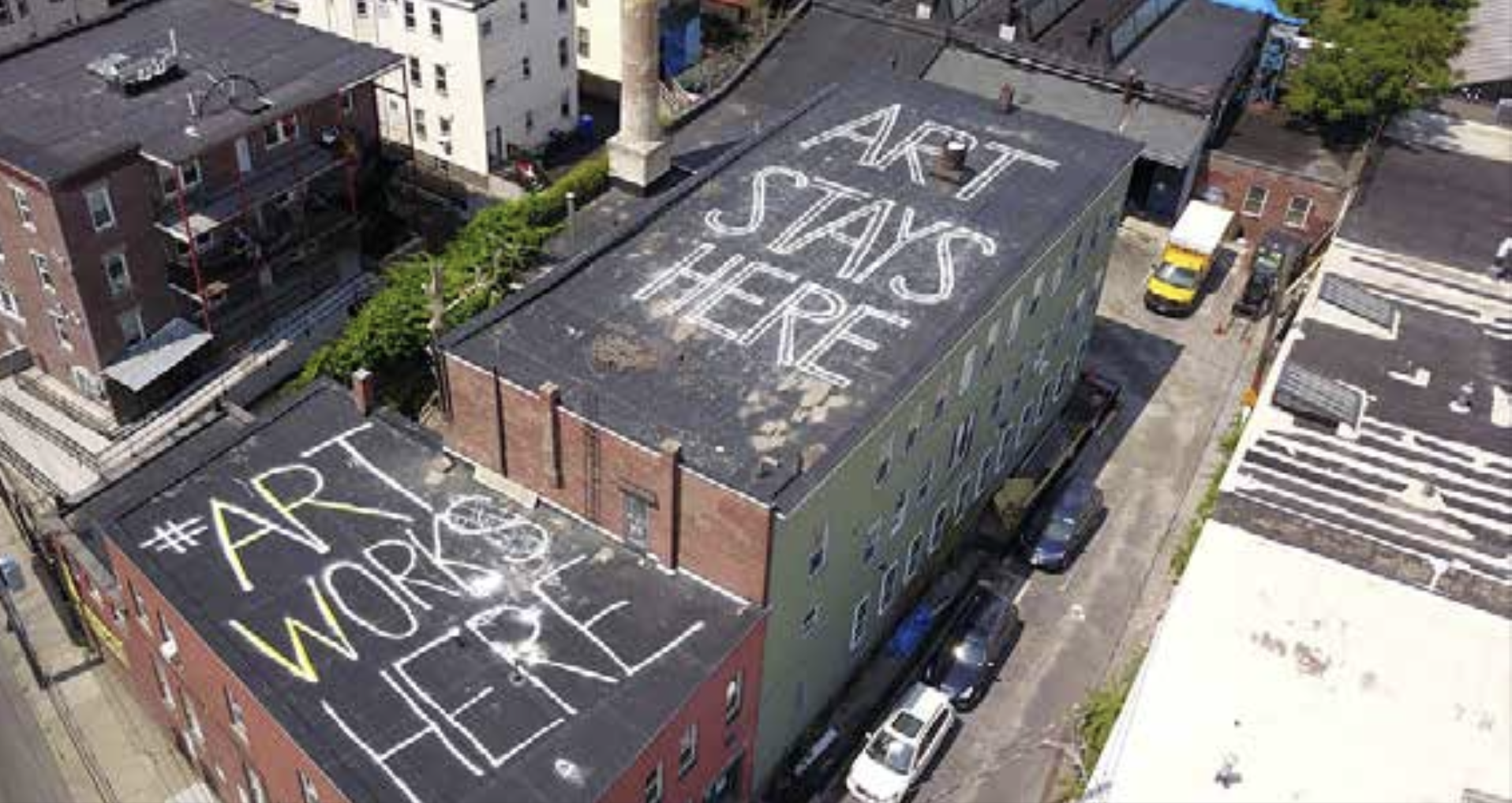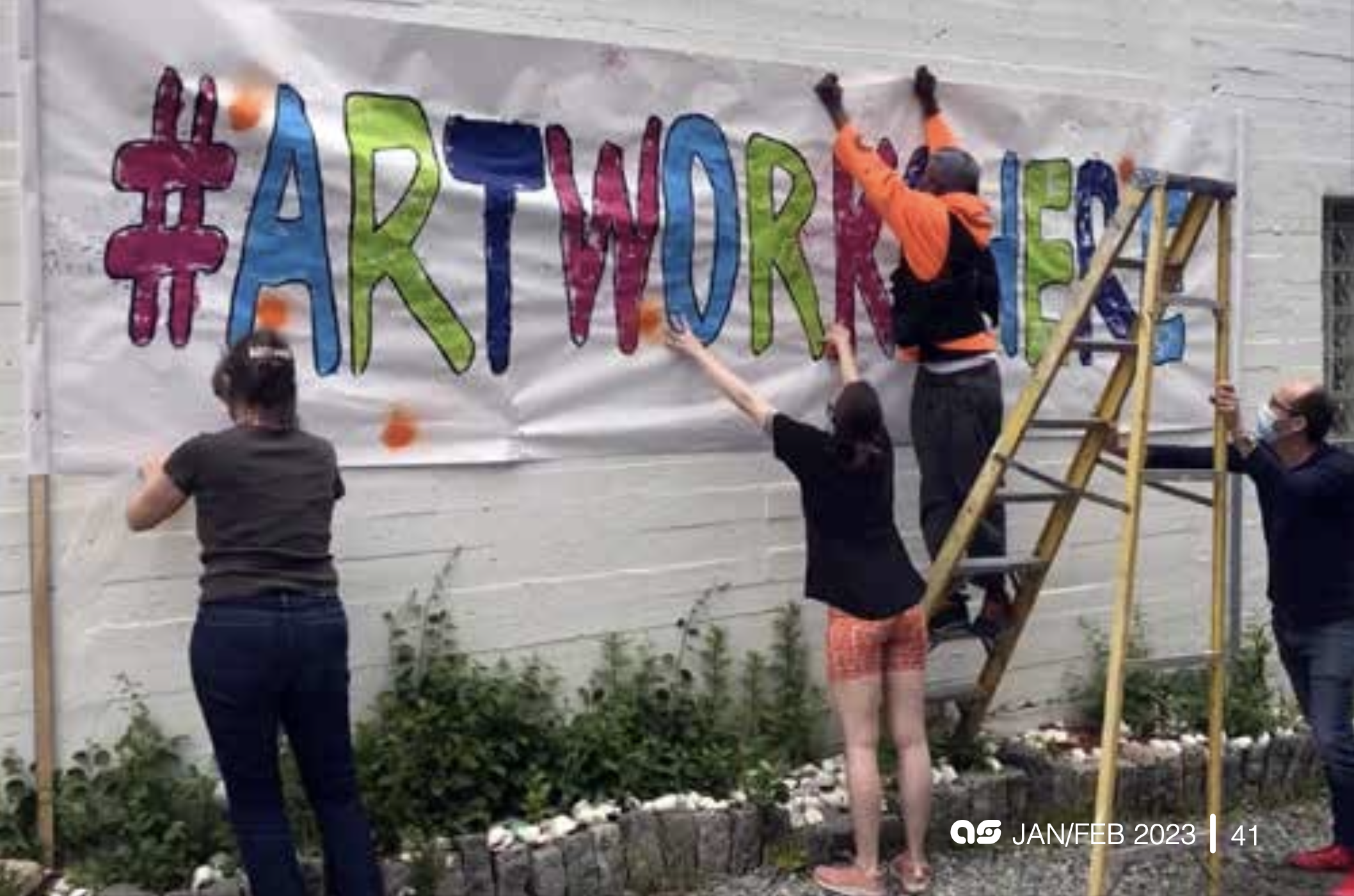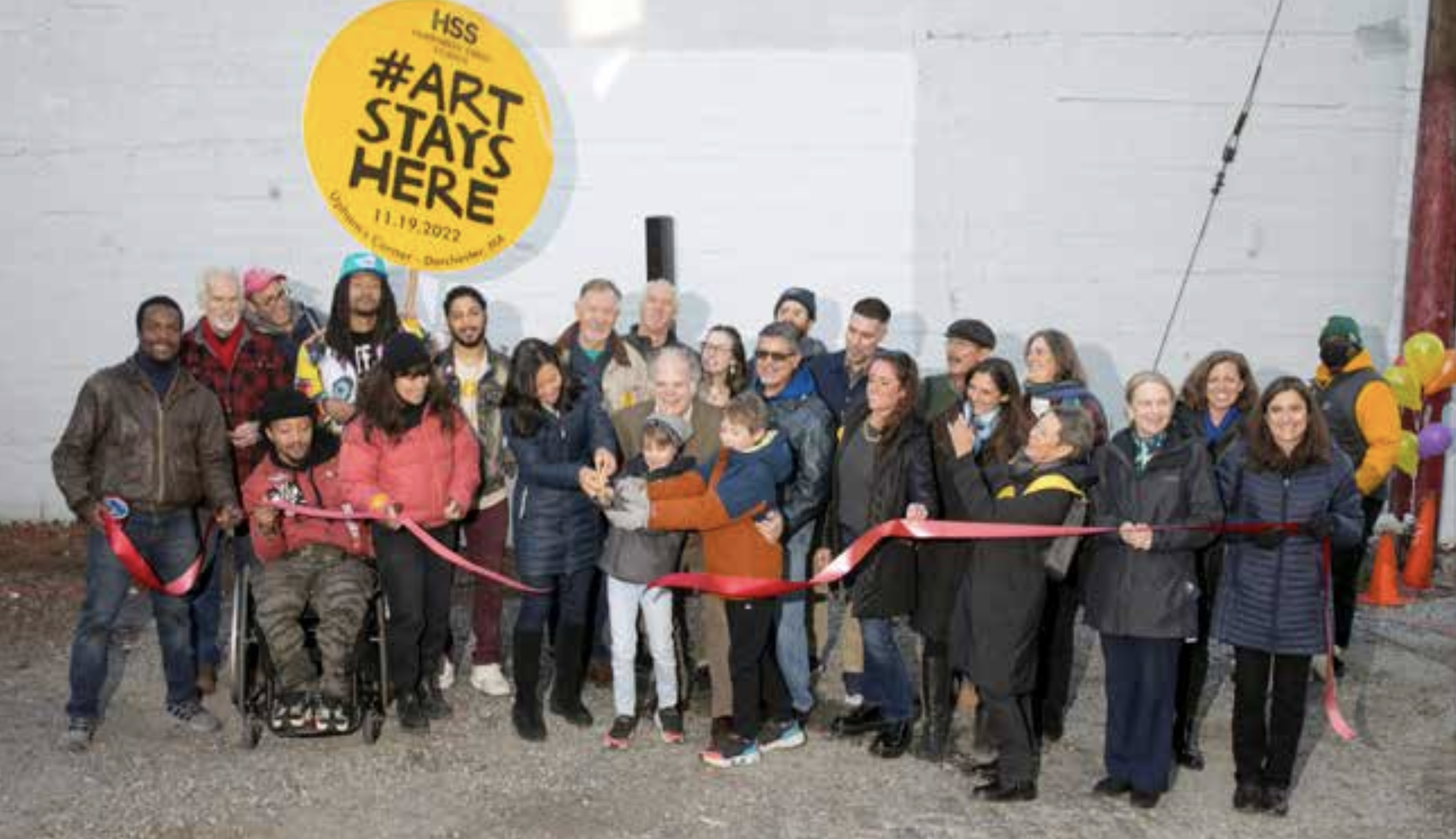ArtScope Magazine: A rare victory for artists
Published in ArtScope Magazine in the January/February 2023 Issue; By Ami Bennitt
ADVOCACY EFFORTS SAVE HUMPHREYS STREET STUDIOS
The age-old problem.
Artist displacement is not new. It’s happened for decades, and it continues to the present day. It’s the age-old gentrification cycle: artists/creatives move into a run-down, undesirable, low-rent neighborhood. Through creating art, they bring more creatives to said neighborhood, which then attracts bars, restaurants, cafes, book and record stores, which then brings people to want to live among the valued neighborhood culture. Then property values go up, forcing the artists out.
In Greater Boston, we’ve lost hundreds of artists, creative small businesses, live performance venues and the other businesses associated with the creative economy as neighborhoods turn over. It happened to Jamaica Plain, Central Square and Davis Square, and we’re in the throes of it taking place in Union Square, Dorchester and Roxbury. We’ve lost many artist communities including Piano Craft Guild, 52 Amory Street, EMF, Central Studios, and countless others.
There are few mechanisms, if any, to help artists and creative small businesses to prevail, despite gentrification and development. Many try to fight against displacement. Most lose. But the tide may be turning before us.
TAKE TO THE ROOFTOPS!
The rooftop of Humphreys Street Studios displaying its #ARTWORKSHERE hashtag that extended its campaign to the skies.
Humphreys Street Studios used the #ARTWORKSHERE hashtag in their campaign to get ownership of their building.
A year before the pandemic, the property housing Humphreys Street Studios (HSS) in Dorchester went up for sale. Founding artists Joe Wheelwright and Gneal Widette, who built HSS in 2002, had passed away. The 45+ artists and creative small businesses weren’t able to buy the $3.5M property. It was first sold to Core Development, who then backed out of the sale. At that point, the artists started asking for help — from the Mayor’s Office of Arts and Culture, and others. They organized internally, forming a tenants’ association in order to speak in one, united voice. They launched their #ARTWORKSHERE, #ARTSTAYSHERE campaign including letter writing, online petition, in-person exhibitions and community meetings.
They formed a steering committee, which to this day meets weekly at 7:45 a.m. on Wednesdays, which acts as the leadership body of the artist community — from working on the campaign, to planning arts programming on behalf of HSS, to grant writing. They met with nearly 100 stakeholders including neighborhood activists, the Community Development Corporation, elected officials, countless arts organizations, city departments and media, and joined in partnership with New Atlantic Development’s Bill Hardy, who had helped other artist communities, including Midway Studios (Fort Point), The Bates Art Center (South End) and 57 Brookside (Jamaica Plain).
Hardy was able to curate a two-part solution: turn the studios into a majority artist-owned and operated nonprofit organization, mortgaged through nonprofit funders Blue Hub Capital and LISC (New Atlantic would manage the property); and turn the vacant adjacent back lot into much needed affordable housing for Uphams Corner. All of this, including $1.6M from the City of Boston (an unprecedented arts funding), shocked the arts and real estate community alike.
Through advocacy, coming together, shared resources, and partnership, Humphreys Street Studios now offers affordable artist workspace, in Boston proper, in perpetuity.
THOSE CURRENTLY AT RISK.
Through their preservation journey, the HSS artists-turned- advocates learned about the decades of artist displacement before theirs, as well as artist communities currently at risk of displacement. Although they were on a road to a solution for HSS, they decided to share what they’d learned with others, and launched the #ARTSTAYSHERE COALITION.
The Coalition is a group of volunteer stakeholders (most who have been displaced at least once in their careers), aiming to teach other artist communities to organize, form tenant associations, take to the streets (or rooftops) and do the same advocacy work. The Coalition is currently helping advocate for other Massachusetts-based artists and creative small businesses at risk at 119 Braintree Street in Allston, the 700+ musicians at 155 North Beacon Street in Brighton, and the 50+ creatives at 438R Somerville Avenue in Somerville, among others.
THOSE WHO HAVE LOST.
Through anti-displacement advocacy, we’ve become heartbroken of the immense loss of countless creative communities from Greater Boston. We’ve met so many artists — some who have been displaced numerous times, some who fought and lost, some who didn’t know to fight and some who closed shop altogether.
And then there’s Western Avenue Studios in Lowell. Over 15 years ago, Western Avenue Studios became a 350+ artist community, turning unused mill buildings into affordable spaces for creatives. Many Boston artists moved there, which brought more artists there, which brought bars and restaurants, which raised property values. Even 40+ miles outside of Boston, last year, Western Avenue Studios became at risk of displacement. Over the past year, The Arts & Business Council of Greater Boston acquired the site and now operates it, preserving it for cultural use.
It will keep happening. Artist displacement needs a systemic private/public solution. And more people need to join the work to make it so.
A SOLUTION?
While advocates work to fight displacement, more advocates need to work with lawmakers to start a state agency to handle arts and cultural displacement. Often, once artists ask for help or try to advocate, it’s too late — property gets sold or developed. An agency would help immediately — either by purchasing or holding a property, teaching artists to advocate, providing capacity to artist communities to organize and operate, and bring together developers, owners, funders, artists and government.
Doing this work piecemeal, one artist community at a time, is exhausting and often fruitless. Most creatives are making their own work, running small businesses and struggling to earn a living. On top of those responsibilities, they must become advocates, providing hundreds of volunteer hours advocating? Those are two full-time jobs at once. While developers work one job, know the ropes, are better resourced, and all too easily tilt the scales.
Humphreys Street Studios ribbon cutting ceremony celebrating becoming a majority artist-owned complex.
Photograph by Mark Howard.
THE FUTURE?
Advocacy is hard work, and a long haul. Advocacy needs more people doing more: raising visibility, educating the public, recruiting like-minded supporters. There is a part to play for everyone. You can care about and support many causes. Add arts, culture and anti-displacement to yours.
There’s room to support green living, affordable housing, better public education, expanding voting rights — and stopping artist displacement. You can sign a petition, write a letter to an elected official, show up to a community meeting. If that’s not for you, you can share a post on social media, donate or offer in-kind services to those doing advocacy. Choose placeKEEPING. We have enough placeMAKING.
If you’re an artist or supporter of artists and creative small businesses, visit artstayshere.org. Reach out. Join us. Participate in citizenry. It will make you feel good.



